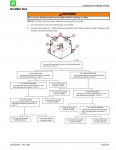Hi everyone,
I've done quite a bit of troubleshooting and narrowing down, so I'm hoping someone can help me get over this next hurdle. Everything I tested points to something in my outboard motor that is constantly drawing off my battery, so it keeps causing dead cells in my batteries. I've isolated it to the outboard (or should I say that I haven't counted out the tilt/trim or the throttle box yet. When I check the pos and neg wires coming from the outboard that's where I'm finding it). I'm not familiar with the electrical components of outboard engines, so I was hoping I could get some help here!
I have a 1991 115hp evinrude engine. What would be the first things that I should check on the engine that might cause this. or perhaps any components that are usual suspects? Thanks!
I've done quite a bit of troubleshooting and narrowing down, so I'm hoping someone can help me get over this next hurdle. Everything I tested points to something in my outboard motor that is constantly drawing off my battery, so it keeps causing dead cells in my batteries. I've isolated it to the outboard (or should I say that I haven't counted out the tilt/trim or the throttle box yet. When I check the pos and neg wires coming from the outboard that's where I'm finding it). I'm not familiar with the electrical components of outboard engines, so I was hoping I could get some help here!
I have a 1991 115hp evinrude engine. What would be the first things that I should check on the engine that might cause this. or perhaps any components that are usual suspects? Thanks!




















